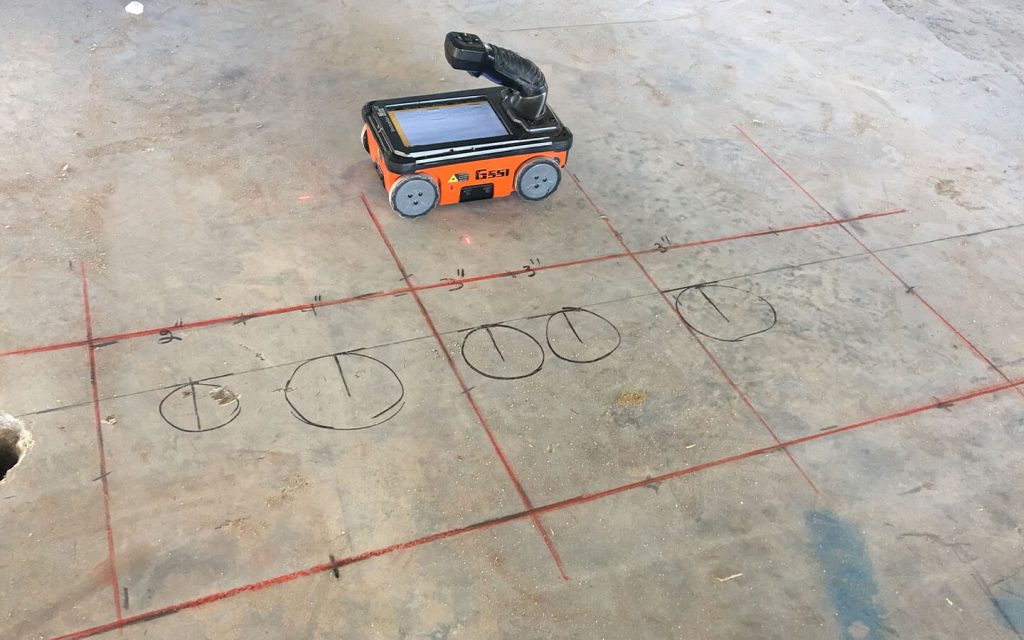Thorough Insights right into Concrete Scanning Procedures
Unveil the Transformative Power of Concrete Scanning in Taking Full Advantage Of Performance and Safety
Concrete scanning has actually arised as an essential tool in the building and construction sector, using exceptional benefits in improving project effectiveness and making certain security criteria. The transformative power of concrete scanning exists in its ability to supply real-time data and thorough understandings, reinventing just how jobs are planned and implemented.
Value of Concrete Scanning
Guaranteeing the architectural stability and safety of building jobs begins with the critical step of performing thorough concrete scanning. Concrete scanning is a non-destructive method used to discover and map subsurface aspects within concrete structures. This procedure is essential in determining possible threats, such as rebar, post-tension cable televisions, and conduits, that may be hidden within the concrete. By using advanced technologies like ground-penetrating radar (GPR) and electromagnetic induction, building and construction teams can precisely find these elements without triggering any kind of damages to the structure.
The value of concrete scanning can not be overemphasized, as it plays an essential role in avoiding accidents, lessening project delays, and ensuring the long-lasting toughness of the building. By determining potential dangers before the construction stage starts, builders can apply suitable precaution and make notified decisions pertaining to the design and execution of the job. In addition, concrete scanning aids in maximizing job timelines and budget by avoiding unexpected prices and hold-ups that might occur because of unexpected blockages within the concrete. Eventually, purchasing complete concrete scanning is an aggressive technique that enhances both efficiency and safety and security in building and construction jobs.
Exactly How Concrete Scanning Works
Concrete scanning operates as a critical device in construction jobs by using innovative modern technologies to spot and map subsurface aspects without creating structural damage. Ground Permeating Radar (GPR) and Electromagnetic Induction (EMI) are two main techniques made use of in concrete scanning.
Throughout the scanning process, the information collected is analyzed in real-time, allowing instant identification of prospective dangers or challenges underneath the surface area. By using these innovative technologies, concrete scanning considerably decreases the danger of pricey damages and injuries on building websites.
Benefits of Concrete Scanning
One of the key advantages of concrete scanning is the capability to spot and situate embedded items such as rebar, post-tension cables, and channels accurately. Concrete scanning helps in planning and making a lot more efficiently, as it gives accurate info concerning the place and depth of architectural components.

Study: Concrete Scanning Success

In an additional instance, a building and construction firm utilized 3D concrete scanning to analyze the problem old concrete structures in a historic structure. The detailed scans given important understandings into the degree of degeneration and helped prioritize upkeep initiatives effectively. By proactively resolving locations of concern determined with scanning, the firm was able to expand the life expectancy of the framework and make sure occupant safety.
These situation researches underscore the transformative power of concrete scanning in click for info improving performance, precision, and safety and security in building tasks.
Implementing Concrete Scanning in Projects
Executing sophisticated scanning modern technologies throughout building and construction tasks has ended up being increasingly crucial for enhancing precision and safety and security. By integrating concrete scanning into job preparation and implementation, construction teams can determine potential risks, such as rebar or post-tension wires, hidden within concrete frameworks. This aggressive approach reduces the threat of accidents, hold-ups, and expensive rework, ultimately resulting in much more effective task timelines and budget plans.
To apply concrete scanning properly, task managers ought to team up very closely with knowledgeable scanning experts to identify one of the most suitable scanning methods for the particular job needs. Involving scanning specialists from the onset of a job allows the group to create comprehensive scanning plans that deal with key locations of worry and guarantee complete data collection.
Moreover, including concrete scanning right into regular task operations can streamline decision-making processes, as real-time scan information gives prompt insights into the problem of concrete structures - Concrete Scanning. This data-driven technique facilitates educated analytical and makes it possible for teams to make adjustments promptly, promoting a society of effectiveness and security throughout the job lifecycle

Verdict
In conclusion, concrete scanning plays a critical function in boosting performance and safety in building and construction jobs. By making use of advanced modern technology to discover and map out underlying structures within concrete, this procedure helps to protect against expensive from this source mistakes, guarantee architectural integrity, and decrease dangers on site. With the capacity to discover hidden components and supply accurate information, concrete scanning confirms to be a valuable device for maximizing job results and making best use of total success.
Concrete scanning is a non-destructive method made use of to find and map subsurface components within concrete structures. Additionally, concrete scanning aids in enhancing task timelines and budget by preventing unforeseen expenses and delays that might occur due to unanticipated blockages within the concrete. One remarkable instance research study includes a massive remodelling project where concrete scanning played a vital function in making sure job success.In one more instance, a building and construction company utilized 3D concrete scanning to examine the problem of maturing concrete structures in a historical building. By integrating concrete scanning right into task planning and execution, building teams can determine prospective risks, such as rebar or post-tension cords, concealed within concrete structures.